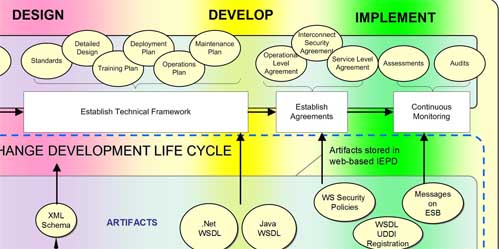MIS Magazine
Companies providing management information systems (MIS) offer other enterprise
applications like enterprise resource planning (ERP),
supply-chain and
inventory
management, sales and marketing, customer relationship management (CRM),
help desk software,
sales force automation, and human resource management software.
Web businesses for sale
Management Information Systems (MIS), are information systems, typically computer based,
that are used within an organization. WordNet described an information system as
a system consisting of the network of all communication channels used within an
organization.
... components that collect, manipulate, and disseminate data or
information... people, communications systems
such as telephone lines, and the data itself. The activities involved include inputing data,
processing of data into information, storage of data and information, and the production of outputs
such as management reports...
Decision Support Systems, Expert systems, and Executive information systems.
More
(MIS) A computer system, usually based on a {mainframe} or {minicomputer}, designed to
provide management
personnel
with up-to-date information on an organisation's performance,
e.g. inventory and sales. These systems output information in a form that is useable by
managers at all levels of the organisation: strategic, tactical, and operational.
The term system in MIS implies order, arrangement and purpose.
The information can be used for various purposes,
-strategic planning
-delivering increased productivity
-reducing service cycles
-reducing product development cycles
-reducing marketing life cycles
-increasing the understanding of customers' needs
-facilitating business and process re-engineering.
More
|
|
|
 |

Definition:
Management Information Systems (MIS) is the term given to the discipline focused on the integration of computer systems with the aims and objectives on an organisation.
The development and management of information technology tools assists executives and the general workforce in performing any tasks related to the processing of information. MIS
and business systems are especially useful in the collation of business data and the production of reports to be used as tools for decision making.
Applications of MIS
With
computers being as ubiquitous as they are today, there's hardly any large
business that does not rely extensively on their IT systems.
However, there are several specific fields in which MIS has become invaluable.
* Strategy Support
While computers cannot create business strategies by themselves they can assist management in
understanding the effects of their strategies, and help enable effective decision-making.
MIS systems can be used to
transform data into information useful for decision making. Computers
can provide financial statements and performance reports to assist in the planning, monitoring
and implementation of strategy.
MIS systems provide a valuable function in that they can collate into coherent reports unmanageable
volumes of data that would otherwise be broadly useless to decision makers. By studying these reports
decision-makers can identify patterns and trends that would have remained unseen if the raw data
were consulted manually.
MIS systems can also use these raw data to run simulations – hypothetical scenarios that answer
a range of ‘what if’ questions regarding alterations in strategy. For instance, MIS systems can
provide predictions about the effect on sales that an alteration in price would have on a product.
These Decision Support Systems (DSS) enable more informed decision making within an enterprise than
would be possible without MIS systems.
* Data Processing
 Not only do MIS systems allow for the collation of vast amounts of business data, but they also
provide a valuable time saving benefit to the workforce. Where in the past business information
had to be manually processed for filing and analysis it can now be entered quickly and easily
onto a computer by a data processor, allowing for faster decision making and quicker reflexes
for the enterprise as a whole.
Not only do MIS systems allow for the collation of vast amounts of business data, but they also
provide a valuable time saving benefit to the workforce. Where in the past business information
had to be manually processed for filing and analysis it can now be entered quickly and easily
onto a computer by a data processor, allowing for faster decision making and quicker reflexes
for the enterprise as a whole.
Management by Objectives
While MIS systems are extremely useful in generating statistical reports and data analysis
they can also be of use as a Management by Objectives (MBO) tool.
MBO is a management process by which managers and subordinates agree upon a series of
objectives for the subordinate to attempt to achieve within a set time frame. Objectives
are set using the SMART ratio: that is, objectives should be Specific, Measurable, Agreed,
Realistic and Time-Specific.
The aim of these objectives is to provide a set of key performance indicators by which
an enterprise can judge the performance of an employee or project. The success of any MBO
objective depends upon the continuous tracking of progress.
In tracking this performance it can be extremely useful to make use of an MIS system. Since
all SMART objectives are by definition measurable they can be tracked through the generation
of management reports to be analysed by decision-makers.
Benefits of MIS
The field of MIS can deliver a great many benefits to enterprises in every industry. Expert
organisations such as the Institute of MIS along with peer reviewed journals such as MIS
Quarterly continue to find and report new ways to use MIS to achieve business objectives.
Core Competencies
Every market leading enterprise will have at least one core competency – that is, a function
they perform better than their competition. By building an exceptional management information
system into the enterprise it is possible to push out ahead of the competition. MIS systems
provide the tools necessary to gain a better understanding of the market as well as a better
understanding of the enterprise itself.
Enhance Supply Chain Management
Improved reporting of business processes leads inevitably to a more streamlined production
process. With better information on the production process comes the ability to improve the
management of the supply chain, including everything from the sourcing of materials to the
manufacturing and distribution of the finished product.
Quick Reflexes
As a corollary to improved supply chain management comes an improved ability to react to
changes in the market. Better MIS systems enable an enterprise to react more quickly to their
environment, enabling them to push out ahead of the competition and produce a better service
and a larger piece of the pie.
Further information about MIS can be found at the Bentley College Journal of MIS and the US
Treasury’s MIS handbook, and an example of an organisational MIS division can be found at the
Department of Social Services for the state of Connecticut.
